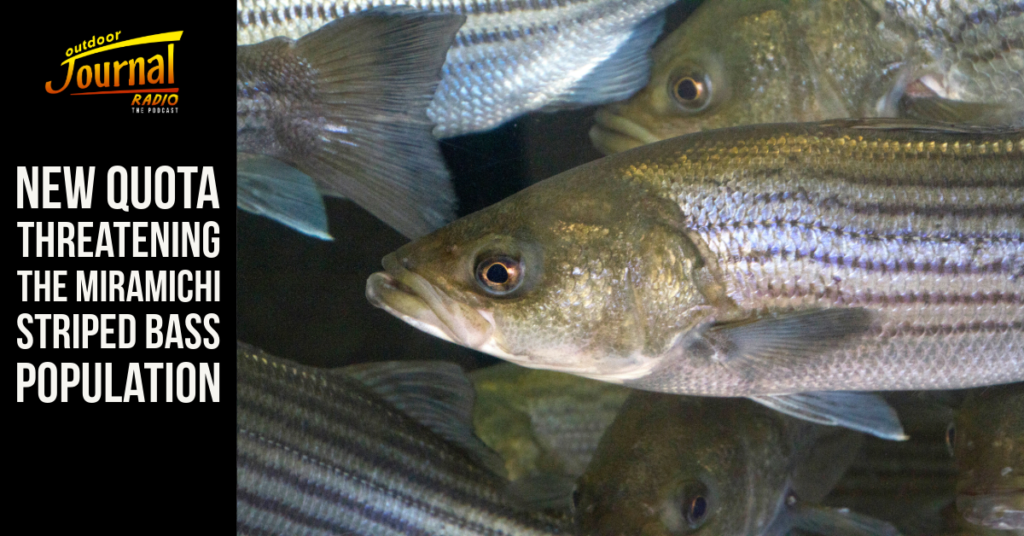As heard on Outdoor Journal Radio
Federal Fisheries Minister Diane Lebouthillier announced a significant expansion of the Indigenous commercial striped bass fishery in the southern Gulf of St. Lawrence last week. The quota will more than triple, increasing by 125,000 fish in addition to the existing 50,000 fish caught annually by the Natuagenag community in the Miramichi River estuary. Additionally, consultations will begin with commercial lobster fishers about allowing them to retain accidentally caught striped bass.
Earlier this year, recreational fishing regulations were also relaxed, permitting anglers to keep up to four striped bass per day, up from the three that were allowed previously. This recent announcement received mixed reactions.
Concerns from Experts
Though the Atlantic Salmon Federation and other salmon advocates praised the policy, some biologists have begun to express their criticism, arguing it prioritizes lobbying interests over scientific management.
To get more answers, we invited Acadia University’s Dr. Trevor Avery, professor of Biology and Striped Bass expert, to join Outdoor Journal Radio. That full interview can be found here:
In this interview, Dr. Avery expressed concern about the sustainability of the new quota. In fact, from a strictly mathematical perspective, a quota of this size, if fulfilled, could result in a total collapse of the fishery within three years if what is known about Striped Bass recruitment is correct.
This, however, is one of the issues. While no government would willingly let a fishery collapse, the blind spot in Striped Bass data make it extremely difficult to adjust regulations before it becomes too late. As Dr. Avery echoed on Outdoor Journal Radio, statistics as simple as recreational angler numbers, Striped Bass numbers, and the success of various spawning years are simply unknown due to a lack of interest (and funding) in the species.
A Call for Striped Bass Population Control
One of the only confirmed spawning sites for Striped Bass in this area is the Miramichi River estuary, which they share with juvenile salmon smolts during their migration to saltwater. Studies by the Atlantic Salmon Federation indicate that the survival rate of these salmon smolts has dropped from 75% to 5% over the past twelve years, potentially due to predation by striped bass.
Last winter, the Atlantic Salmon Federation requested that fishing efforts be increased to reduce the striped bass population to 100,000 spawners. Nathan Wilbur, the federation’s vice-president of regional programs, viewed the quota increase as a step towards recovering the Miramichi Atlantic salmon and other important species in the Gulf of St. Lawrence.
However, DFO’s 2022 stock assessment estimated the striped bass spawning population at 471,000 individuals, about half of what it was five years earlier. This assessment placed the species in the “cautious zone” due to data limitations, as pointed out by Avery. He emphasized that the fishery targets spawners, predicting significant harm to the population if 50% of it is harvested annually.
Future Steps
Despite the controversies, the salmon federation sees the quota increase as a temporary measure to balance the ecosystem. In her announcement, Lebouthillier did not specify DFO’s long-term target for the striped bass population but highlighted the need for controlling the stock to create economic opportunities and advance reconciliation.





